Updated: 08-Feb-2019
Mr. Pierre J. Gregoire's company built aviation engines as we will see below (water radiators included).
-This is a four-cylinder in a single block with riveted metal sheet enclosures, encasing everything to form the cooling-water chamber.
-At the same time they support the water inlet and outlet ducts to the radiators, which are a series of vertical tubes through which the liquid circulates due to the temperature variation and therefore its density. It was constructed since 1910.
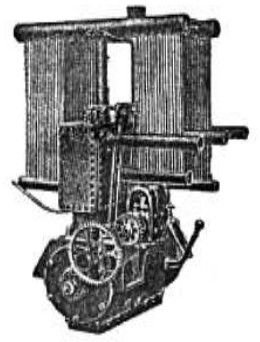
“Gregoire”
-Los motores de cuatro cilindros que se ofrecían inicialmente fueron:
The initially offered four-cylinder engines were:
-The 24 HP, with 80 mm bore and 132 mm stroke, running at 1,600 rpm, weighing 58 Kgs.
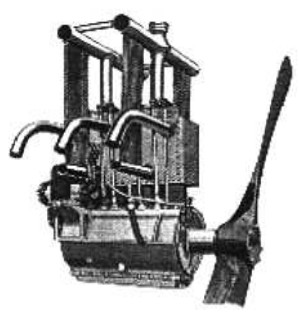
"Another Gregoire, seen from the same side"
-The 35 CV, with 92 mm bore and 140 mm stroke, running at 1,600 rpm, weighing 78 Kg.
-The 50 CV, with 120 mm bore and 150 mm stroke, running at 1,400 rpm, weighing 110 Kg.
-Today, it is possible to see a Gregoire engine at the stock warehouse of the Musée de l'Air et de l'Espace in Le Bourget.
-By 1923 there was a 2-stroke engine with a displacement of 6,000 cc. It was a V8 that delivered 120 CV at 1,500 rpm.
-Later the "Gregoire" logo is used in the automotive industry, not being sure that there was a relationship because it is Mr. Jean A. Gregoire, from Asnieres.

“Gregoire logo”
-The aviation engines were derived from this manufacturer's racing cars.
-The cylinders were in a single block and because of the shape of its crankcase it was called, at that time, of the "Parallélépipédique" type, a usual name in French but
shocking in Spanish.
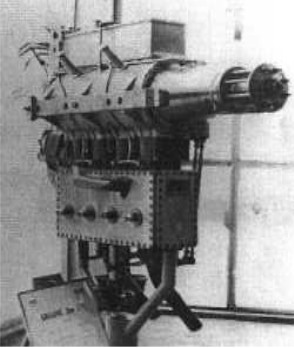
“Gregoire with inverted cylinders”
-The photograph shows us the inverted-cylinder model just as it is mentioned about the one that exists at the MAE in Paris at present.
-Towards 1910 the existing GYP engines gave 20/28 CV (24 CV) at 1,700 rpm.
-The 30/40 CV (35 CV) engine ran at 1,600 rpm.
-The v8 gave 60/70 CV.
-It has been said that the inverted Gregoire engines were the first to use this arrangement to lift the propeller from the obstructions on the ground.
-The design was made in 1909 and it was shown at the Paris Air Show the following year.
-As Gregoire GYP appears an inverted 4-cylinder, 35 CV engine in the NASM files, Fot. (BG-600600-20). Surely the same as here.
-More GYP photos below
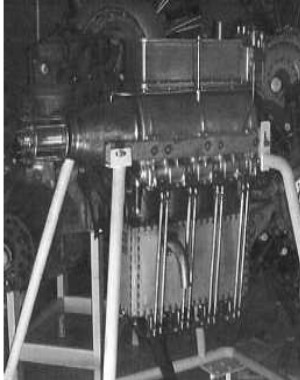
“The inverted GYP at the MAE in Paris”
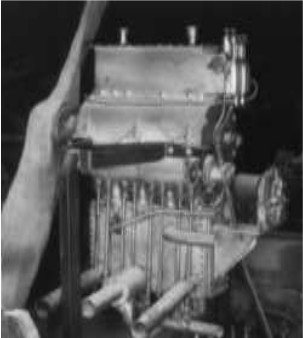

“Two more views of the inverted GYP”
From Appendix A4/6: At the 1909 Paris Air Show, the 40 CV Gregoire engine was presented, as we see it mounted on a structure with its propeller.
-It was water cooled and had four cylinders even when three exhaust pipes are distinguished.
-The central unit joins the outputs of two cylinders.
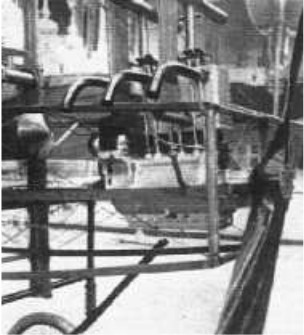
“The GYP, Gregoire”
-The double and tubular radiator is characteristic of this engine. See more information in the main text.
-De Gregoire (GYP) tenemos una vista diferente del motor de cuatro cilindros y 40 CV.
We have a different view of the four-cylinder Gregoire (GYP) engine that gave 40 CV.
-In this model the cylinders are upright.

“The 40 CV Gregoire”
-During WWII, Gregoire, which was initially dedicated to automotive and aviation industry, developed an engine with clear aeronautical architecture. Just after the war the company presented it installed in an economic car, like Panhard (see Dyna-Panhard) and Citroën . The latter being the one who had a great success with this formula.
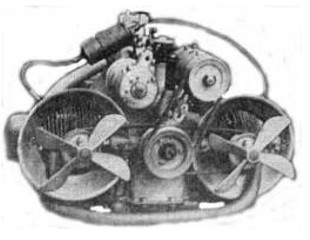
“Gregoire car engine"
Engines of GREGOIRE
Model: 24 CV, 4 cyl. inline
Arquitecture: 4-cylinder In-line
Cooling:
Total Displacement:
Bore / Stroke:
Power: 24 CV
Weight:
Model: 35 CV de 4 cyl. inline
Arquitecture: 4-cylinder In-line
Cooling:
Total Displacement:
Bore / Stroke:
Power: 35 CV
Weight:
Model: 4 cyl. inv., 40 CV
Arquitecture: 4-cylinder In line inverted
Cooling:
Total Displacement:
Bore / Stroke:
Power: 40 CV
Weight:
Model: 50 CV de 4 cyl. inline
Arquitecture: 4-cylinder In-line
Cooling:
Total Displacement:
Bore / Stroke:
Power: 50 CV
Weight:
Model: V8 60/70 CV (2-stroke)
Arquitecture: 8-cylinder V-Engine
Cooling:
Total Displacement:
Bore / Stroke:
Power: 70 CV
Weight:


